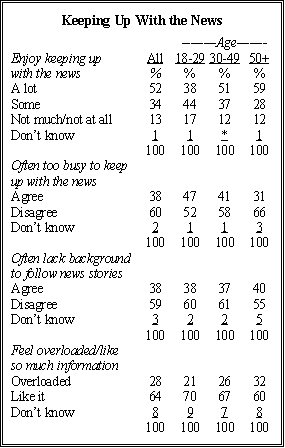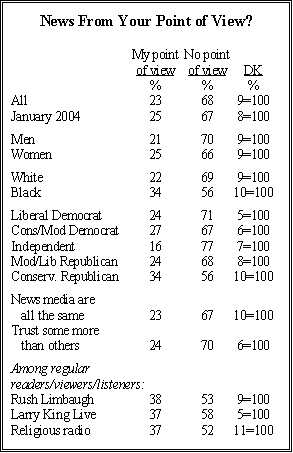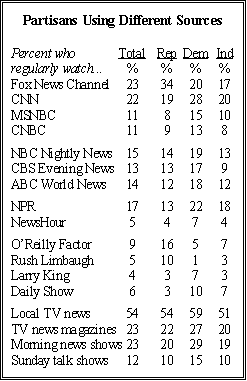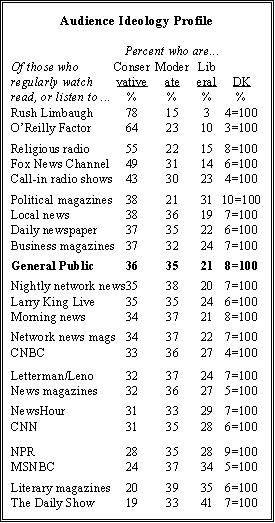
A narrow majority of Americans say they enjoy keeping up with the news “a lot,” and this attitude is one of the strongest predictors of how much news people actually seek out. Enjoyment of the news has been very stable over the past dozen years. About one-third (34%) say they enjoy keeping up with the news “some,” while the rest say “not much” or “not at all.”
Enjoyment of the news is somewhat greater among those with higher levels of education, but the differences are not dramatic; 61% of college graduates enjoy the news a lot, compared with 53% among those with some college experience and 47% among high school graduates. Greater differences are seen by age, with young people least likely to say they enjoy the news (38% among those under 30 years of age), and older people most enthusiastic (59% among those age 50 and older).
Two other constraints on the public’s appetite for news are also long-standing and are each shared by about four-in-ten people: lack of time to follow the news, and a lack of background information with which to interpret the news. Overall, 38% of the public agrees with the statement that “I am often too busy to keep up with the news,” while 60% disagree. And 38% say they lack the background to follow news stories; 59% disagree.
Being too busy for the news is a greater obstacle for younger people than for older ones, but there is little difference across age groups in the feeling that one lacks the background to keep up with the news. Lack of background knowledge is a bigger problem for the less educated (44% among those with a high school education, compared with just 29% of those with a college degree).
Most people express little concern about “information overload.” Just 28% say they feel overloaded with information, “considering all the TV news shows, magazines, newspapers, and computer information services.” By contrast, 64% say they like having so much information available. The balance of opinion on this question has changed very little s ince it was first asked in 1995, at the dawn of the internet age.
News also has a social value, giving people something to talk about with family and friends. Roughly three-quarters of Americans (76%) either completely agree (32%) or mostly agree (44%) with the statement: “I often talk about the news with family and friends.” This practice is widely shared; although young people get less enjoyment from following the news, they are only slightly less likely than older Americans to say they talk about it with friends and family.
News From Your Point of View?

In the eyes of many news consumers, the news media are largely undifferentiated in terms of trustworthiness 45% say this though a small majority (52%) says that they trust some news sources more than others. There has been little change in these views over the past two years. Compared with the less educated, better educated people are far more likely to say they trust some sources more than others; 66% of those with a college degree say this, compared with just 44% of those with a high school education. People who enjoy keeping up with the news are also more likely to see differences among news sources.
But a preferences for some sources over others does not mean that people are looking for a particular slant to the news. In fact, a large majority of the public continues to say that they prefer getting news from sources that don’t have a particular point of view 68% in the current poll, unchanged from two years ago. Only about a quarter (23%) say they prefer getting news that shares their point of view.
Conservative Republicans (at 34%) are more likely than other partisans to say they prefer news with a point a view, and independents are least likely to do so (at 16%). Regular news audiences for most sources and programs do not differ much on this question, though a few stand out as especially interested in news with a point of view. The regular audiences for Rush Limbaugh (38%), Larry King Live (37%), and religious radio programs (37%) are all significantly above the average in preferring news with a point of view.
Audiences Remain Divided along Party Lines

News audiences for cable television news became more polarized along partisan and ideological lines between 2002 and 2004. That polarization remains but has not increased since 2004. Republicans are still much more likely than Democrats to say they regularly watch the Fox News Channel (34% for Republicans, 20% for Democrats), while Democrats are more apt to turn to CNN (28% vs. 19% for Republicans).
But there has been a modest increase in partisan polarization for other news sources. The gap between Republicans and Democrats in regular viewership of the nightly network news on ABC, CBS, or NBC is now 14 points, nearly three times as large as it was in 2004; currently, 38% of Democrats regularly watch compared with 24% of Republicans. There is a slightly smaller gap in the regular audience for NPR 22% of Democrats listen regularly, compared with 13% of Republicans.
The general pattern for network news, CNN, and NPR is also seen with many other news sources. More Democrats than Republicans say they regularly watch a wide range of different news programs. There is a five-point partisan gap in regular viewing of local television news (59% for Democrats, 54% for Republicans), and five and nine-point gaps, respectively, in the audiences for the networks’ news magazine shows and morning news shows. More Democrats than Republicans also regularly watch Sunday morning talk shows (15% vs. 10%). Nearly twice as many Democrats as Republicans (7% vs. 4%) are regular viewers of the News Hour with Jim Lehrer. And Democrats also outnumber Republicans among regular viewers of the Daily Show with Jon Stewart (by 10% to 3%).

Republicans are more numerous among the regular audiences of The O’Reilly Factor; 16% of Republicans say they watch the show regularly, compared with 5% of Democrats. And there is an even more lopsided disparity among the audience for Rush Limbaugh: 10% of Republicans say they listen regularly, compared with just 1% of Democrats.
News Audiences and Ideology
General-interest news organizations that command large audiences do so in part by appealing to viewers and readers across the ideological spectrum. The regular audiences for local television news, local newspapers, the network nightly news, and network magazine and morning news programs each have about the same number of conservatives, moderates, and liberals as in the public at large. So too do business magazines and the Larry King Live show on CNN.

Although conservatives outnumber liberals by 36% to 21% in the public, the regular consumers of the Daily Show, literary and political magazines such as The Atlantic and The New Yorker, and the MSNBC cable channel are significantly more liberal than conservative. Liberals and conservatives are equally numerous in NPR’s audience, and among regular viewers of the NewsHour and CNN.
At the other end of the spectrum, the audiences for Rush Limbaugh and the O’Reilly Factor are overwhelmingly conservative. Conservatives greatly outnumber liberals in the regular audiences for religious radio and for the Fox News Channel.
Moderates, who constitute 35% of the general public, are in short supply among regular readers of political magazines such as the Weekly Standard and The New Republic, where they are 21% of the readership. In addition, moderates make up a relatively small proportion of the regular audiences for religious radio (22%), the O’Reilly Factor (23%), and Rush Limbaugh’s radio show (15%).




